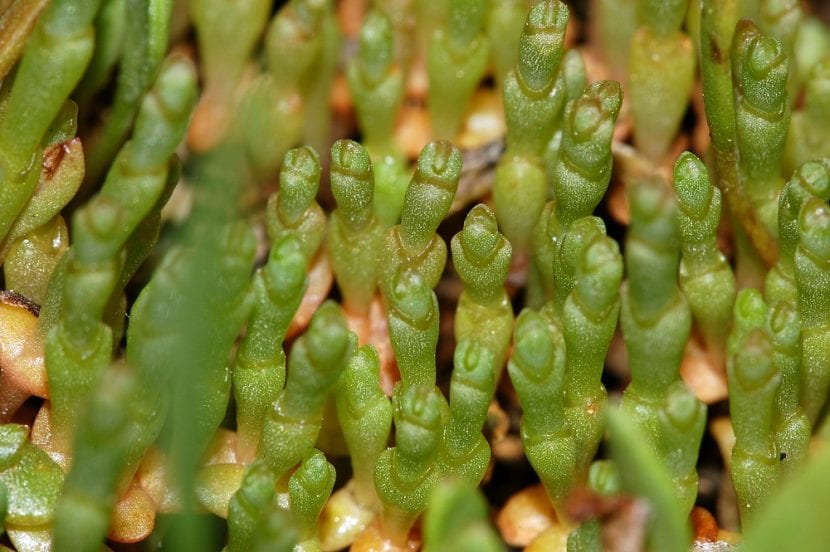
Image - Wikimedia / Fritz Geller-Grimm
There are very beautiful plants, but there are also others that are very curious. One of them is the Salicornia very large, who lives in salt flats and salt flats. It does not have leaves, although that does not remove it does not have some ornamental value.
Normally, it is not grown in gardens, not even in pots, but if you live near the coast you may be interested in having a plant capable of living without problems in conditions where the soil is very rich in salts. Know her.
Origin and characteristics
It is a perennial succulent plant native to western Europe and North Africa. In Spain we can find it in the Iberian Peninsula and also in the Balearic Islands. It lives in, as we said, saline tidal areas. Its scientific name is Salicornia very large, which translates into Latin would mean something like "the most branched salty horns" (Salicornia = salty horns; ramosissima = the most branched), and the common salicornia or salty grass.
It has stems up to 30 centimeters tall, very branched, green or purple depending on their youth. The inflorescence is a terminal spike 2 to 3,5 cm high, with 10-14 fertile segments and the lower one sterile. The seeds are very small, just 1,4 by 0,7mm in diameter. It blooms and bears fruit from September to November in the northern hemisphere, being able to do so in July as well.
What uses does it have?
In their places of origin it is used as edible, in salads.
Can it be cultivated?

Image - herbariovirtualbanyeres.blogspot.com
The truth is that it is not usually cultivated, but that does not mean that it cannot be. Yes indeed, it is important not to remove the specimens from their habitat -something that, on the other hand, is prohibited-, but what will be done will be to take the fruits and then sow the seeds in the nursery. Another option is to visit nurseries that specialize in the production of native plants and buy a specimen from them.
so that the Salicornia very large to live well it is necessary that it grows on saline soils, with good drainage and that it receives water frequently.
Did you know her?